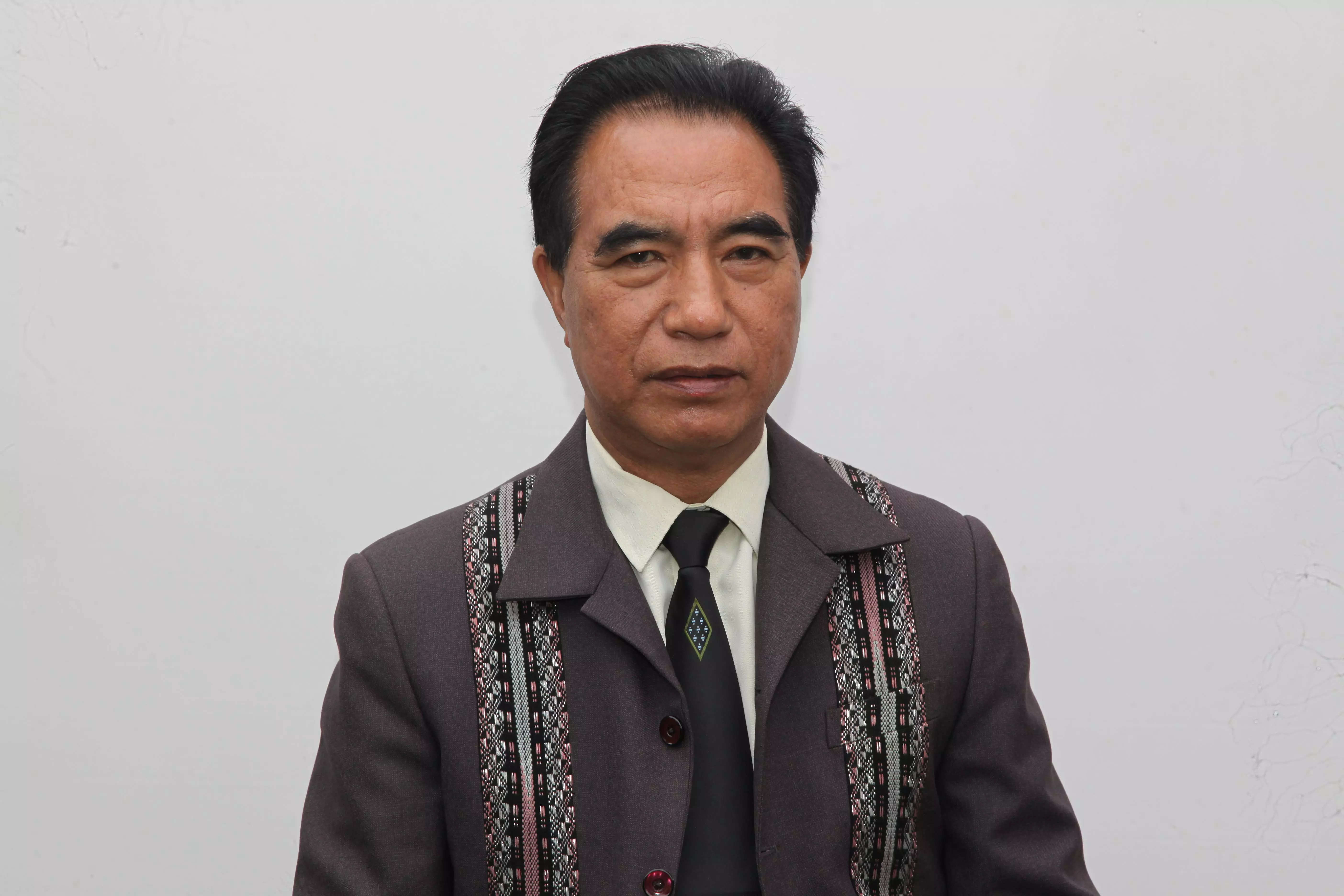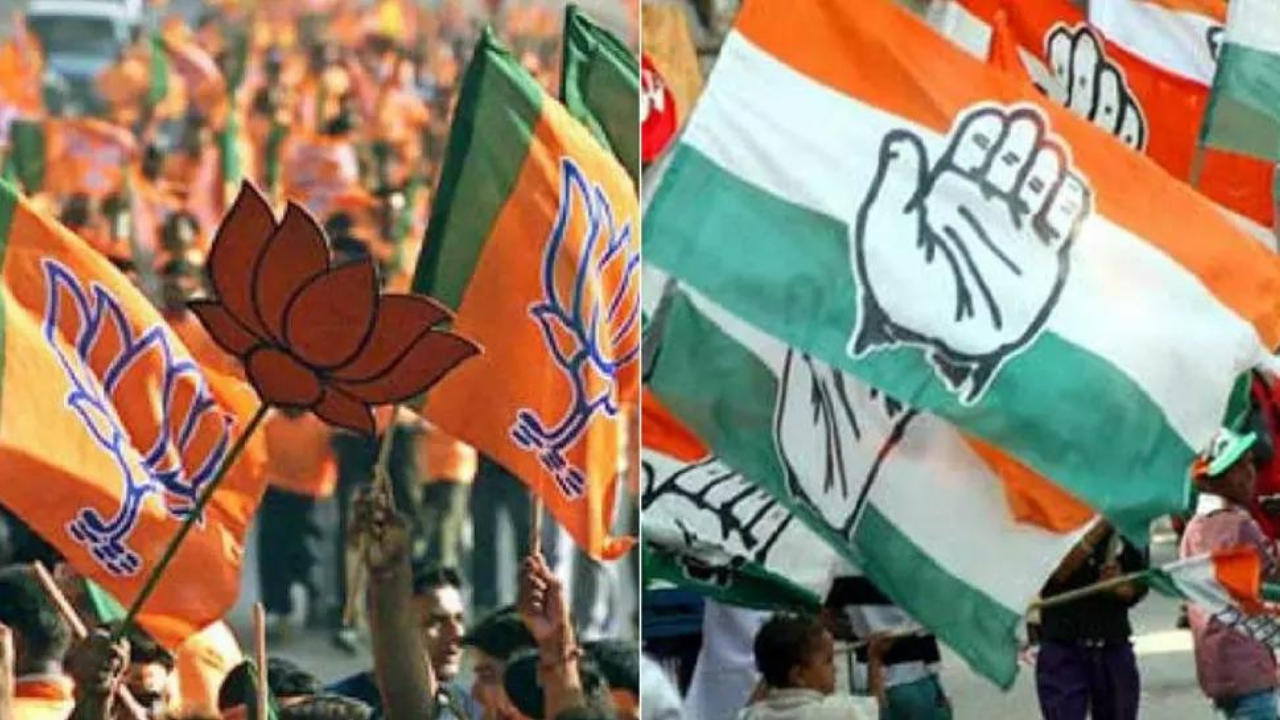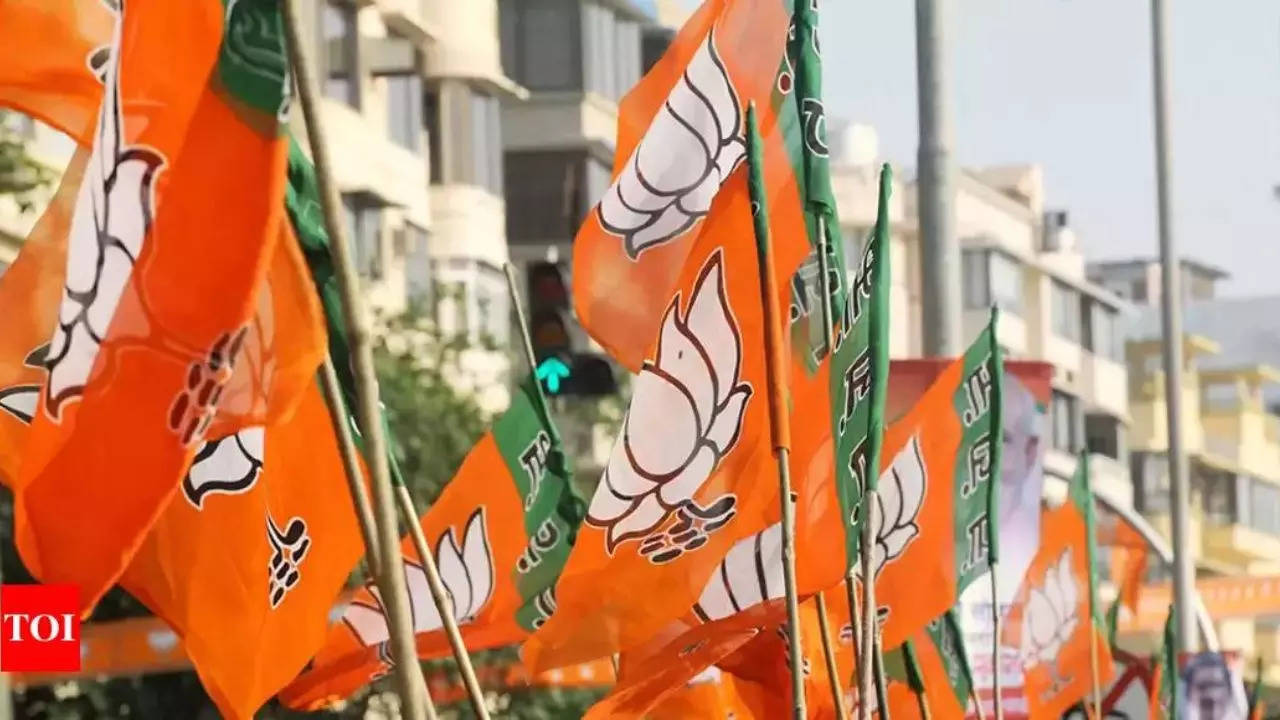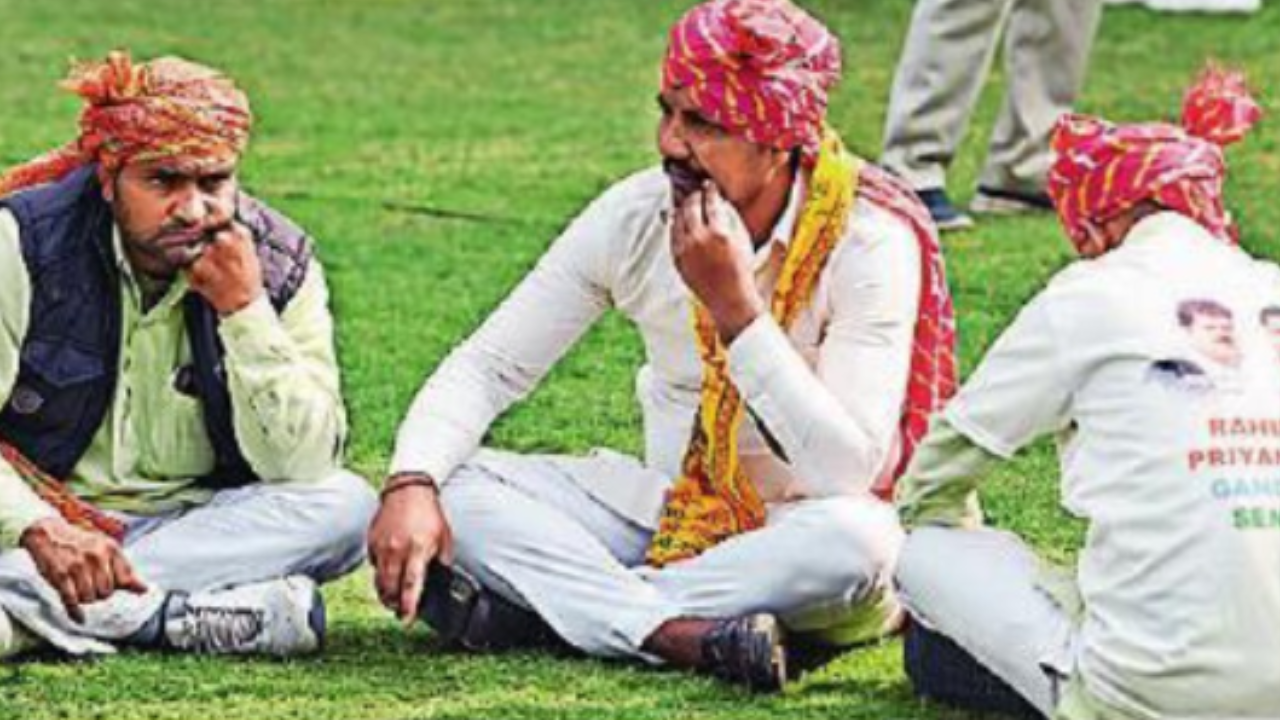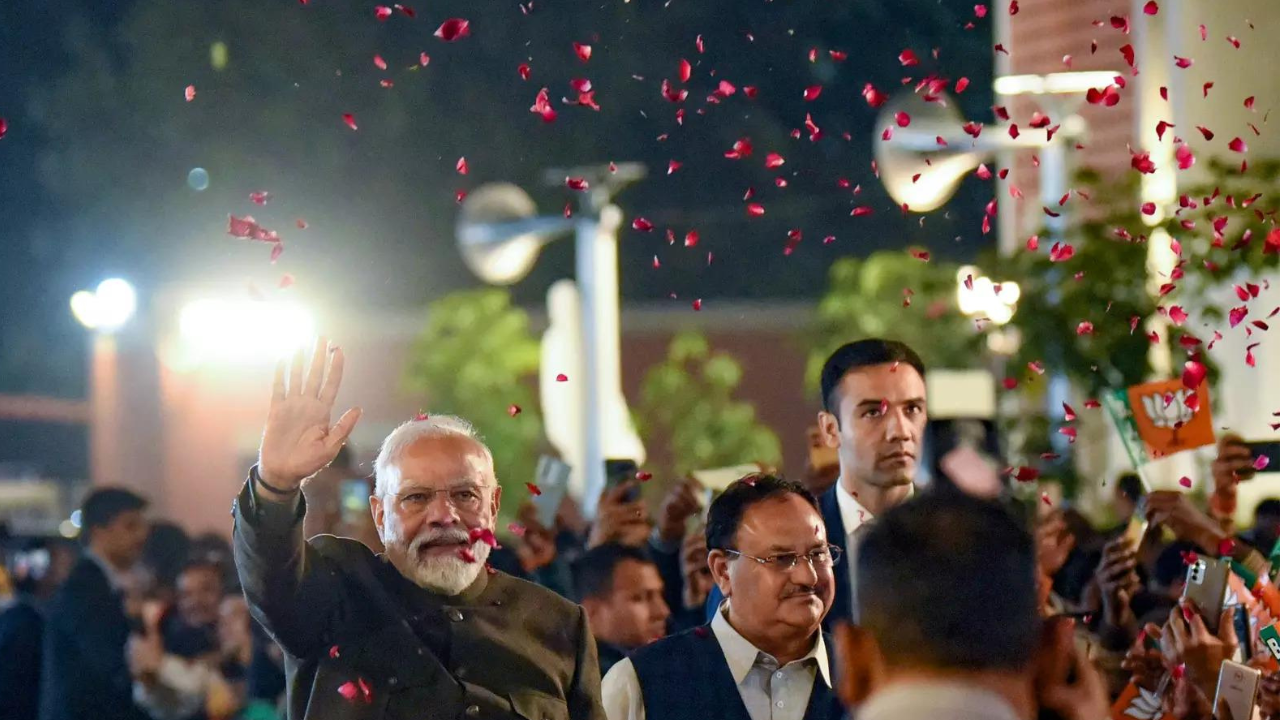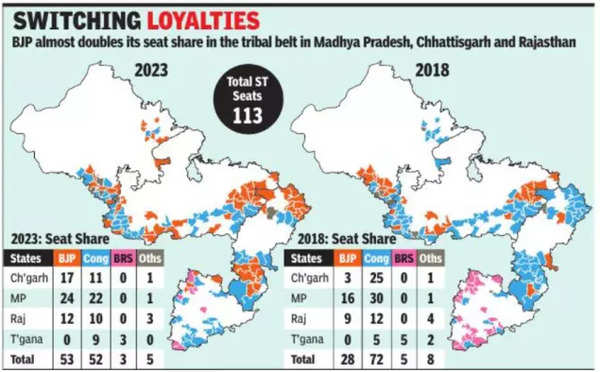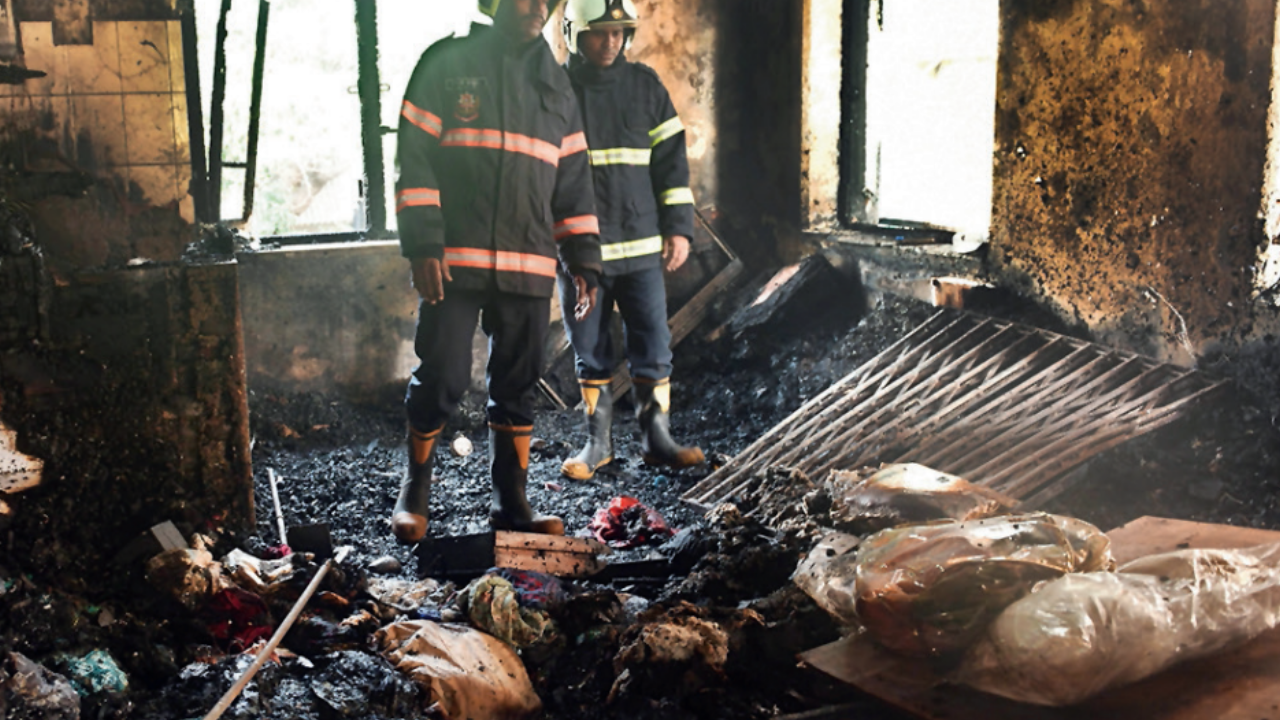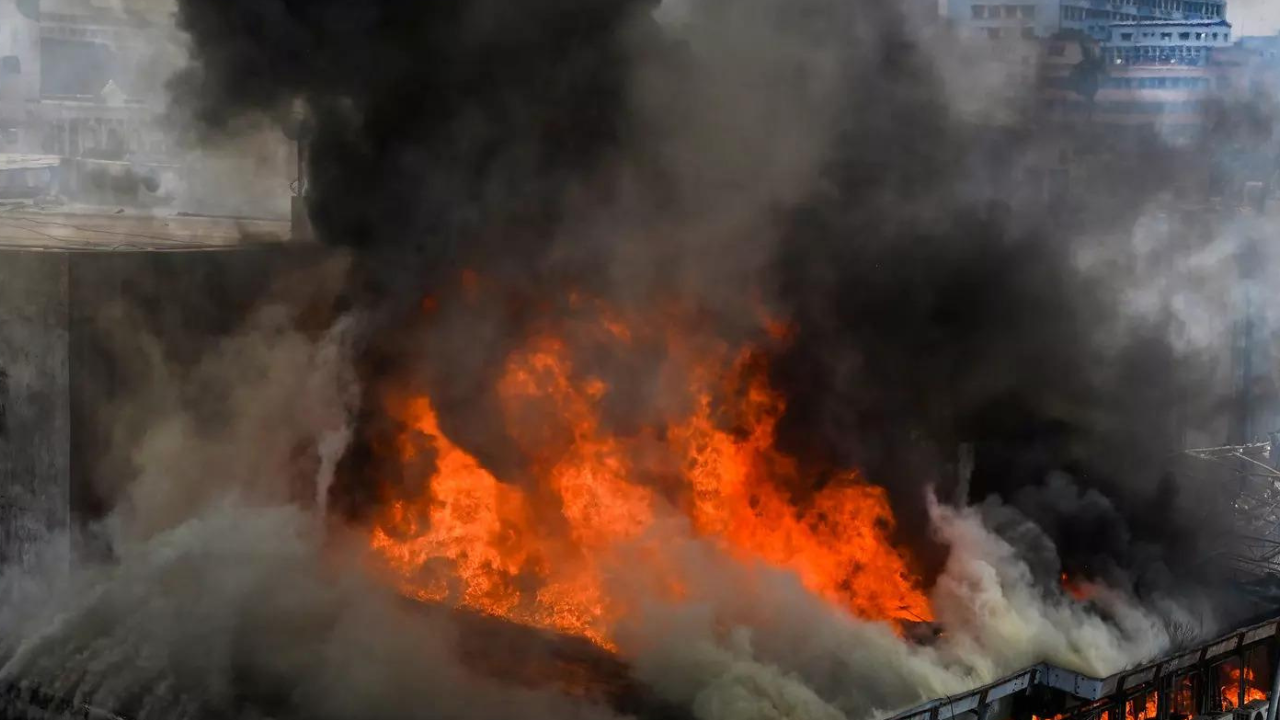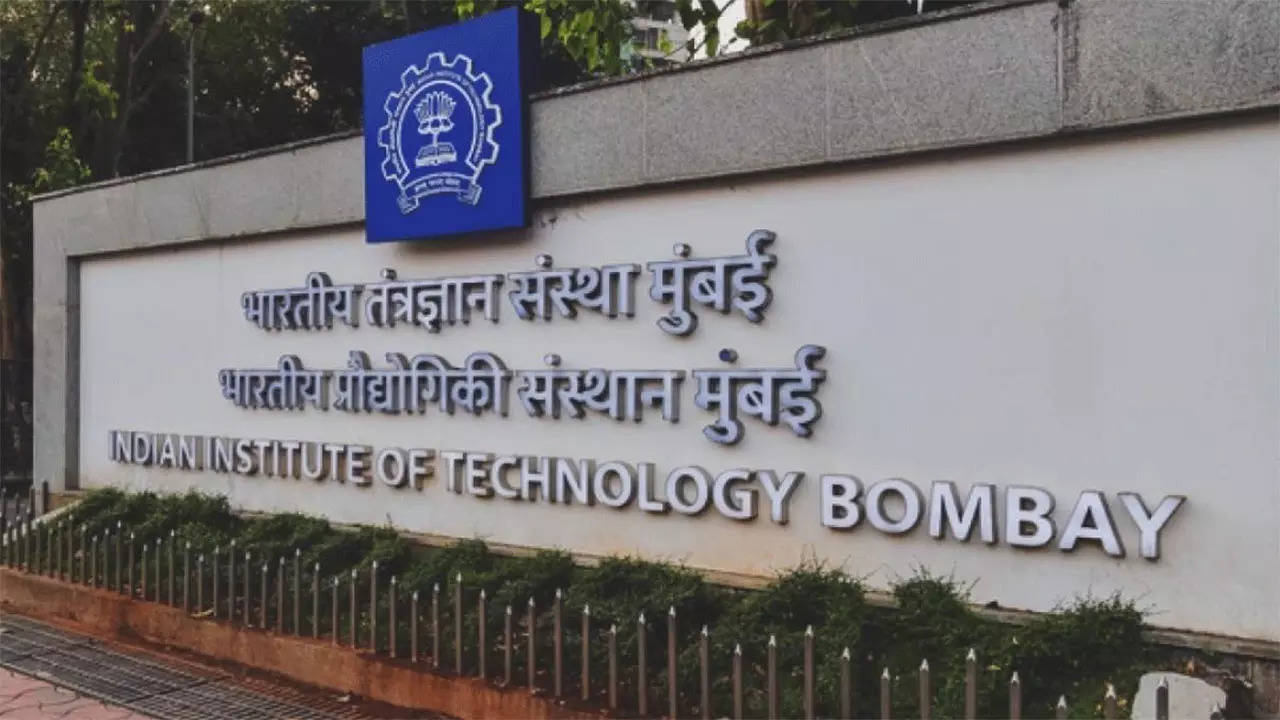Big winnersNarendra Modi: Modi was the face of BJP’s campaign with the party not declaring its CM names for MP, Rajasthan and Chhattisgarh. ‘MP Ke Mann Mein Modi’, the central theme in Madhya Pradesh, became the plank elsewhere as the party tried to leverage his popularity to get past obstacles of an unambitious unit in Chhattisgarh, fear of anti-incumbency in MP, and leaders who did little groundwork to back up their personal ambitions in Rajasthan, besides Congress’s ‘populist’ and ‘caste’ planks
Amit Shah:Wins in MP and Chhattisgarh confirm the ‘master strategist’ tag that he earned after scripting BJP’s sweep of UP in the 2014 Lok Sabha polls.He chose the two states instead of Rajasthan, which has traditionally ousted the party in office. The victories, especially in Chhattisgarh, can be attributed to his shrewd planning, morale boosting and stern ‘party comes first’ message to self-obsessed local notables. His success removes any doubt as to who will run BJP’s 2024 Lok Sabha campaign.
Assembly Polls Results : From Congress washout in Hindi heartland to end of KCR’s national ambitions
Shivraj Singh Chouhan: BJP didn’t name him as its CM face in MP, but he remained at the centre of the party’s narrative about the state’s transformation into an agricultural powerhouse with decent infrastructure. He got the PM’s endorsement as a ‘lokpriya and karmath (popular and diligent)’ CM. His initiatives like ‘ladli behna’ and the resultant popularity among women were important factors in the victory. The result is a blow to his rivals in the party and might keep him in the CM’s chair, a prospect that had almost been ruled out.
Revanth Reddy: Since the day he was appointed Telangana Congress chief, the slim, trim and aggressive Reddy stayed focused on targeting CM KCR and predicted BRS’s ouster. His outreach throughout the state boosted Congress, though his unilateral style threatened fragmentation in the party. The AICC intervened in time and a chastened Reddy disciplined himself while other leaders were accommodated in organisational roles.
JP Nadda: He assigned himself Rajasthan, where, the revolving-door pattern notwithstanding, BJP faced a challenge because of factional rivalries and Ashok Gehlot’s vigorous populism. He ensured the malcontents did not start mutinies and squabbles did not result in sabotage. The defeat of some of the senior lights and victory of rebels illustrate the enormity of the task he faced.
Vasundhara Raje: The two-time CM didn’t give up when the BJP brass projected a ‘collective leadership’ model instead of making her the CM face. Impressive turnouts at her rallies showed she is the most popular Rajasthan BJP leader, strengthening her claim to a third stint as CM. However, her aloofness during Congress’s entire term, and inability to come to terms with the new BJP leadership and take people along, could go against her.
Jyotiraditya Scindia: Responsible for the fall of the Kamal Nath government in 2020, Scindia can gloat over the party’s performance in the Gwalior-Chambal region as most of the Congress MLAs there had joined the saffron fold with him. Coming after Priyanka Gandhi’s dig about his height, the result may taste even sweeter. He is seen as a candidate for the CM’s post because he is relatively young and his appointment would be a taunt to the Gandhis, to whose inner circle he once belonged.
Big losers
Bhupesh Baghel: An aggressive politician and OBC face, Baghel ensured that Congress was connected to the ground through his five years at the helm and made farmers a big part of his voter outreach. But his tenure was marred by a power struggle with colleague TS Singh Deo, and the Centre’s allegations of corruption bothered him during his last two years. His confidence in his own strategy and the party’s chances pre-empted any fresh thinking, and Congress ended with a poor showing in Chhattisgarh.
KCR: The man who exhumed the Telangana statehood demand, and turned it into political capital, finally fell to hubris. Insulated from the ground after a decade in office, the Telangana CM erred in repeating his army of MLAs, and the perception that he was a BJP ally went against him. While he marginalised civil society, which had powered his rise, Congress successfully caricatured his term as rule by a ‘gang of four.’
Kamal Nath/Digvijaya Singh: A Delhi player, Nath stayed put in Bhopal after the 2020 coup that toppled his government, and micromanaged Congress’s Madhya Pradesh campaign. But insiders say he was overbearing, didn’t give prominence to other leaders, and was not relentless in his campaigning. His banking on anti-incumbency to win, refusing to accept the revamped party strategy of candidate selection, and not using the designated pollster, proved disastrous. Singh was the nuts-and-bolts man of the organisation, but his clashes with Nath created the impression of a disjointed campaign. His complacency and frozen ideas about candidates and strategy revealed a lack of touch with new realities.
Ashok Gehlot: Long dubbed ‘jaadugar (wizard)’, the Congress leader promised to buck Rajasthan’s tradition of ousting governments every five years. His exhaustive campaign for the last one year, promise of ‘mehengai rahat’ and ‘7 guarantees’ sought to blunt anti-incumbency and BJP’s communal push. They didn’t win him the match but staved off a rout. Gehlot’s insistence on repeating sitting MLAs will come in for serious scrutiny in the party, especially when Congress came this far in the otherwise lost battle.
Rahul Gandhi/Priyanka Gandhi Vadra: After sitting out Gujarat and Himachal Pradesh, Rahul returned to the campaign trail in Karnataka where his voter outreach complemented the local Congress satraps and delivered a massive win. Rahul and Priyanka were Congress’s lead campaigners in this round of polls, adding weight to the party’s populist promises by targeting PM Modi over inflation and unemployment, and alleged patronage of the Adani group, while also promoting Rahul’s new ‘caste census’ theme. The siblings addressed dozens of rallies, but failed to bring dividends they were confident about. The result raises doubts about the effectiveness of Rahul’s Bharat Jodo Yatra, which was widely credited for the Karnataka victory.
Sachin Pilot: The young Congress leader turned from resentful rebel to champion campaigner as he toured his stronghold of eastern Rajasthan and other seats to shore up Congress’s fortunes. Though Pilot was also in demand in other election-bound states, particularly MP, all eyes were on whether he could deliver Gujjar and youth votes, besides other demographics. In the final analysis, he couldn’t.







